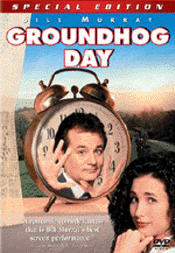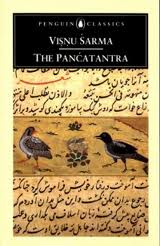Consider this story idea for a moment.
A guy named Phil works as a weatherman in a local news channel. He hates everyone and everything around him and understandably gets it back in equal measures. Just when you thought he was beyond redemption, a strange thing happens to him. The calendar seems to stage a protest.. and stops suddenly on a single day. He then relives the same day again and again..
If Steven Spielberg got hold of this story idea, he might have made it into a period film with loads of EFX. He might have summoned the best of the Hollywood stars to power the story. Mm.. the end result might have taken the box-office by storm. Or go the ‘Terminal’ route, where even the most dependable Tom Hanks and the gorgeous-even-after-marriage Catherine Zeta Jones fail to rescue a sagging script.
Luckily for all of us, Harold Ramis (co-writer/director) treads a different path.
He weaves an endearing tale against the Pittsburgh-Punxsutawney backdrop with the ‘Groundhog Day’ as the annual fest. Having done that he casts Bill Murray (as Phil) and Andie MacDowell (as Phil’s love interest) irrespective of their box-office potential. Then, he gets the script rocking with a set of small town characters that are uncomplicated and full of life. The net result is a hilarious movie in which Phil battles every day with the same characters and different results.. yet appears the same, as he starts all over again. 🙂
Here is an interesting comparison between ‘The Terminal’ and ‘Groundhog Day’. Both tell the story of middle aged, persona non grata kind, who are stuck in a new world. The characters Phil and Victor lead ‘in-the-transit’ kind of life waiting for the circumstances to change. Both fall in love with beautiful women way beyond their league. So where does the difference sets in? It’s in their characterization and what they seem to be. Victor comes across as a too good a guy to be real, while Phil is frail enough to pass off as normal guy. Hence Phil’s journey becomes more appealing while that of Victor appears like a fallen angel trying to get back to heaven.
Mm.. let’s come back to ‘Groundhog Day’.
The film follows a simple three-act structure-the problem, the struggle and the solution. The first act is pretty conventional. It establishes Phil as the smirking, ever-ready-to-pass-a-snide-remark type and the ‘Groundhog Day’ holding him as a prisoner. In the second act, the storywriters try something different, and bring in an under current of philosophy. Here Phil is made to reach out to others and in the process, realize his follies. Once the selfishness is replaced by compassion, Phil finds his spell vanishes in the third act, and wakes up besides his true love on a brand new day. And the end titles roll to the song of ‘Almost like being in love’ by inimitable Nat ‘King’ Cole.
While Phil’s struggle makes you laugh, as the story goes by, you tend to sympathize with him. Bill Murray, not even for once, lets you take your eyes off him and he mouths quite a many witty rejoinders. And, you stay connected with him and can’t miss the transformation on his face from a smirk to a genuine smile. Infact, his portrayal of Phil is one of his best performances till date.
‘Groundhog Day’ continues to enthrall the audiences all over, even after its first release more than a decade back (1993). Infact, it has become synonymous with ‘a recurring happening not to one’s liking’. And no wonder, recently South African cricket captain Graeme Smith compared his role as captain to that of the film Groundhog Day, leaving him jaded, along the lines of the frequency in which the two sides have been playing each other over the last few months.
But Graeme Smith might not mind to relive the filmi ‘Groundhog Day’ experience again and again like so many others all over the world.



